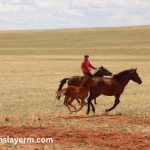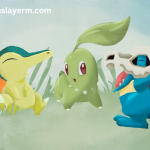
Chipmunks are small, cute, and furry animals that are found in many parts of the world. They are members of the squirrel family and are known for their playful and mischievous behavior. One of the most common questions asked about chipmunks is whether or not they can climb trees. The answer to this question is a resounding yes! Chipmunks are excellent climbers and can easily scale the trunk and branches of a tree.
What is Clematis?
Chipmunks are small rodents that are found in many parts of the world and are known for their cheeky and energetic personalities. They are part of the squirrel family, and can often be found scurrying around and chirping away at one another.
While most people think of chipmunks as animals that primarily stay on the ground, they can also climb trees. But what is clematis? Clematis is a type of flowering vine that is also known as a ‘woodbine’. It has a long stem with a few leaves and many small flowers.
This plant is native to Europe, North Africa, and parts of Asia, and can be found in gardens and other outdoor spaces. Chipmunks are nimble little creatures, and they are capable of climbing almost any tree, including clematis.
They use their sharp claws to latch onto the vine and make their way up the stem. As they climb, they may grab a few leaves or flowers for a snack. They are also very good at finding places to hide while they rest.
This means that you may not always see a chipmunk on the clematis, but they are certainly able to make their way up the vine.
What do Deer Eat?
Chipmunks are small, terrestrial animals that have adapted to living in trees. They are found in almost all parts of the world and prefer to live in wooded areas. They are omnivorous and feed on a wide variety of foods, including nuts, seeds, fruits, insects, and even small vertebrates.
Although they do not climb trees as much as other small mammals, they do use their sharp claws to climb short distances and sometimes even hang upside down from branches. Chipmunks are also known to occasionally consume the bark and sap from trees.
In terms of what deer eat, these animals are mainly herbivorous and feed on a variety of vegetation, including grasses, shrubs, and leaves. They also consume nuts, acorns, and other small fruits. Deer are also known to occasionally feed on insects and other small animals.
Does Deer Eat Clematis?
Yes, chipmunks do climb trees. They are small, agile rodents with sharp claws that allow them to grip onto branches and climb up the trunk of trees. Chipmunks also have a good sense of balance, enabling them to move quickly and safely up and down the trees.
The chipmunks use tree branches as a means of transportation, to find food, and to hide from predators. As chipmunks are omnivores, they will eat a variety of food sources, including nuts, insects, seeds, and fruits.
This means that they can forage for food in the upper parts of trees, as well as on the ground. In addition, chipmunks use trees as a refuge and a place to build their nests.
Is Clematis Appetizing to Deer?
Yes, chipmunks do climb trees, although they are not as adept at doing so as some other animals. Chipmunks are excellent climbers, and they can navigate even the most difficult terrain with remarkable agility. They mainly use their claws and their tail for support as they hoist themselves up and down trees and other structures. Chipmunks are often seen perched on branches and even on top of tall trees.
When it comes to clematis, however, the answer to whether or not chipmunks find it appetizing is a definite no. Clematis is a flowering plant that produces fragrant and colorful blooms. While chipmunks are known to feed on a variety of fruits and nuts, they generally avoid clematis because of its bitter taste.
Additionally, the plant’s tough stems and thorns can be dangerous for chipmunks to climb, making it an unattractive option for their food source.
Potential Risks of Feeding Deer Clematis
Chipmunks are small mammals that are known to inhabit trees and climb them. However, foraging for food in trees can be risky for chipmunks, as they can be preyed upon by larger animals.
One potential risk of feeding deer clematis is that it can attract other animals to the tree, making it more dangerous for the chipmunk. Deer can be attracted to the sweet nectar of the clematis, as well as other small mammals and birds.
Predators such as hawks, owls, and cats may be attracted to the tree as well. While chipmunks are adept climbers, they are still relatively small in size and can be easily overpowered by larger predators.
Therefore, if a chipmunk is feeding on the clematis, it is important to be aware of potential risks and to take precautions to ensure their safety.
Methods of Protecting Clematis From Deer
Chipmunks are agile, agile climbers and can easily climb trees to find food and shelter. While chipmunks can be beneficial to a garden, they can also cause damage to gardens and yards if they are not kept in check.
To protect your clematis from chipmunks, there are several methods you can use. One is to cover the base of the clematis with chicken wire or another type of mesh that will prevent chipmunks from digging and burrowing under the clematis.
You can also use a nontoxic repellent around the base of the clematis to deter chipmunks from coming close to it. Other methods of protecting your clematis from chipmunks include using sticky substances, such as Vaseline or petroleum jelly, on the stems of the clematis.
This will keep chipmunks from climbing the stems and will also discourage them from eating the flowers. Finally, you can also use a motion-activated sprinkler system or a motion-activated lighting system around the clematis to scare away chipmunks.
Conclusion
Chipmunks are highly adept climbers who can easily climb trees. Their sharp claws and strong legs allow them to scramble up trees with ease. Additionally, their small size makes it easier for them to fit in tight spaces and climb narrow branches.
While chipmunks are most comfortable in trees, they are also known tmb rocko cars, walls, and other surfaces. Despite their small size, chipmunks can climb to great heights, making them one of the most versatile climbers in the animal kingdom.










